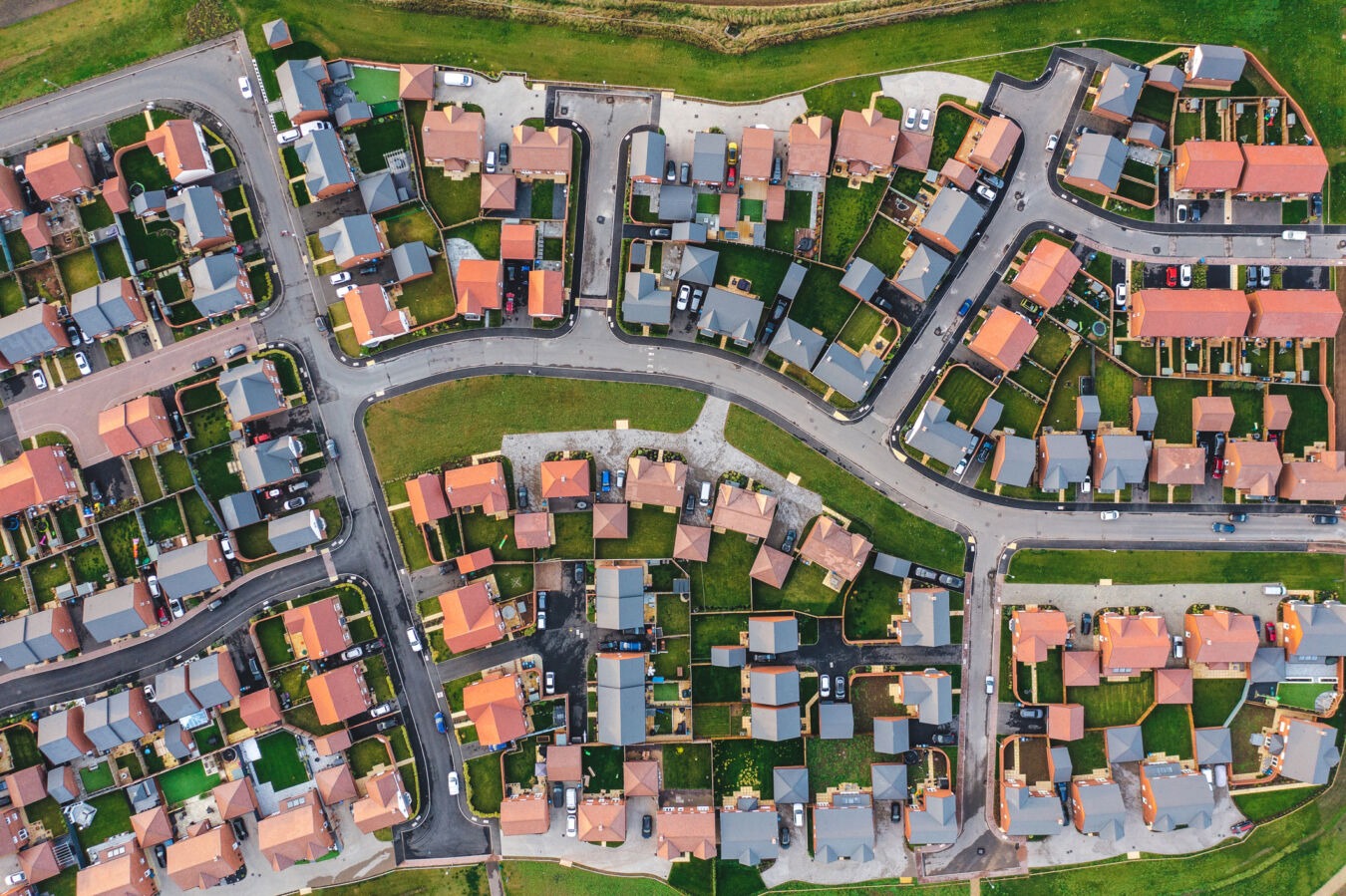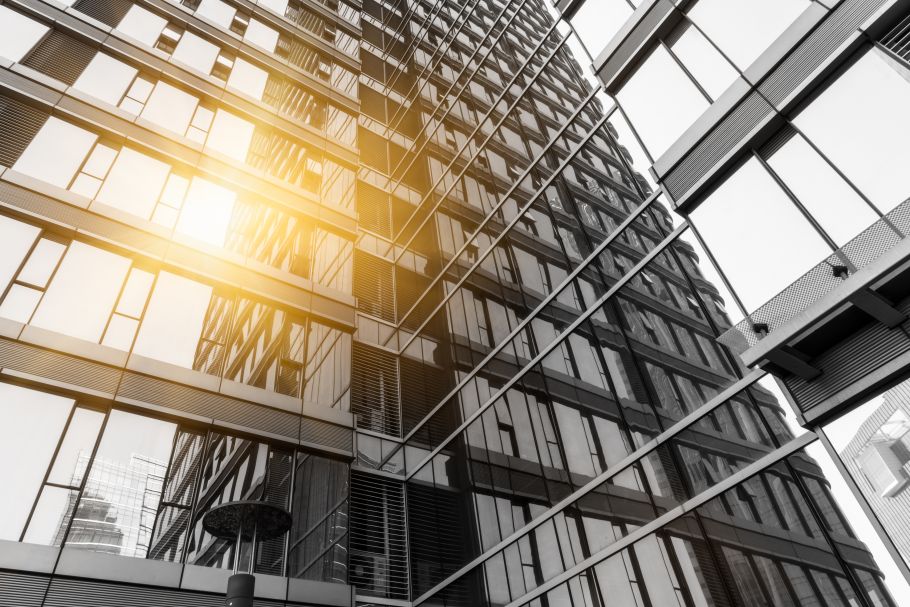
Contributors: Andrew Hall
Date published: 7 September 2020
How housing can build sustainable foundations for the green recovery
Building and construction is responsible for an estimated 39% of global greenhouse gas emissions, putting the housebuilding industry on the frontline of the battle for a green recovery. Growing demand for houses in shorter timescales and increased economic pressure on SME housebuilders due to COVID-19 mean it is not an easy fight. Yet there is no more important time to focus on sustainability and supporting the green recovery. The Scottish Government goal of achieving net zero carbon emissions by 2045 (and a 75% reduction in emissions by 2030), requires housebuilders to take immediate action and lead the charge towards more sustainable building processes and energy efficient homes.
District heating networks
Earlier this year the Scottish Government announced new regulations to ensure all new-build homes have either renewable or low carbon heating systems by 2024. Housebuilders should consider district heating networks, which can provide a long-term affordable, sustainable source of heat in dense urban areas and help to tackle fuel poverty. British housebuilders may be nervous about venturing into this relatively uncharted territory, but district heating networks are already popular in parts of Europe, supplying around 65% of housing in Copenhagen. In Scotland, the District Heating Loan Fund and the Scottish Low Carbon Fund offer financial support for creating district heating networks, with the priority for a green recovery likely to bring future funding options.
Why are some housebuilders hesitating?
Heat networks are currently unregulated (unlike the highly regulated gas and electricity networks). The Heat Networks (Scotland) Bill currently making its way through the Scottish Parliament aims to redress that balance and the risks of investing in an unregulated network. A two-layered approval process will require heat network operators to hold a Heat Network Licence, and licence holders must obtain Scottish Ministers’ consent for any proposed heat network project.
Materials
The Resource Efficient House, a three-bedroom demonstration home at Ravenscraig, showed the industry that entire homes could be net zero, while also limiting the considerable amount of waste created during construction. The design and build process not only embraced recycled content and materials, including insulation made from recycled glass and plastic bottles, it also looked at long-term energy conservation such as a water recovery system that re-uses waste water.
To achieve net zero emissions by 2045, housebuilders must not only produce a good quality and attractive design, they need to ensure they have a sustainable, efficient product that provides long-term emissions and energy consumption savings. Greater regulation of the energy efficiency rating of homes means prospective buyers are more interested than ever in a home’s energy consumption and performance. Landlords are focusing on higher energy efficiency standards, while rising levels of fuel poverty are increasing demand among homeowners for properties that focus on the conservation of energy.
Electric vehicle (EV) infrastructure
The Scottish Government’s ambition to phase out new petrol and diesel cars and vans by 2032 injects urgency into the need for a supporting infrastructure that encourages public investment in ultra-low emission vehicles. Housebuilders have an essential role to play by helping lay the foundations of such infrastructure, and future-proofing current developments. Housebuilders are increasingly required to provide a certain number of EV charging stations as part of the planning process, and should factor this into their development plans. A number of developers are already promising to provide all the necessary infrastructure needed for installing EV charging points in every new home.
Making provision for EV charging
At this early stage, it is unclear how the landscape of EV infrastructure will evolve. Housebuilders can help to encourage uptake of EVs by facilitating home charging points but there are a number of significant factors they should consider when incorporating EV charging stations, or infrastructure for future installation, into a development:
- Is the electricity capacity of the development sufficient? There must be capacity for the number of EV charging stations consented and the potential for individuals to install them within their properties.
- What public and/or private funding is available for initial installation of EV charging stations and infrastructure?
- Will the shared EV charging stations belong to the owners’ association or be adopted by an EV infrastructure operator to own or lease and maintain the equipment in the future?
- Who pays the costs of maintenance – the owner or the operator?
- Does the deed of conditions for the development allow for future disposal?
- Should individual owners have rights to install their own EV charging stations? Restrictions on such installations may be needed to avoid overwhelming the capacity in the development.
- Should there be a requirement to recover any areas of land conveyed or leased to an operator if no longer required in the future?
Social housing
Social housing providers must meet the Energy Efficiency Standard for Social Housing (EESSH), which aims to tackle fuel poverty and lower greenhouse gas emissions. The majority of socially rented homes already met the standard for 2020, prompting a new EESSH standard (EPC Band B) for all social housing to meet by the end of 2032, if practically possible and subject to cost limits, technology and obtaining necessary consents.
As more units in new developments are allocated as affordable housing, housebuilders must bear these updated requirements in mind to ensure they meet the standard set by the Scottish Housing Regulator for their registered social landlords (RSL) members. Prioritising energy efficiency in the design/build process is attractive both to private buyers and affordable housing providers.
RSLs can assist the green recovery and target the growing levels of fuel poverty in Scotland by:
- ensuring newly-built units acquired from a housebuilder or developer will meet the EESSH standard for 2032;
- identifying other measures taken to lower energy consumption in the long-term for affordable housing occupiers;
- engaging in the construction process for new build social housing developments and considering what other energy efficiency measures could be implemented such as EV chargers or a district heating network;
- identifying available funding, such as the Decarbonisation Fund, to help meet the cost of compliance with the EESSH; and
- planning for improving the energy efficiency of existing stock to ensure the EESSH will be met by 2032 and seeking funding (including via the Decarbonisation Fund) to improve the energy efficiency ratings of these properties.
Planning to improve existing stock
Many existing social housing properties are in old-style tenements with high ceilings and poor insulation. Retrofitting existing RSL stock is the most popular option to tackle these inefficiencies. Increasing insulation, installing improved glazing and replacing heating systems with more energy efficient technologies can reduce the occupiers’ energy bills and lower CO2 emissions.
Renfrewshire Council’s retrofitting programme highlights the benefits of this: its plans to retrofit 75 properties could cut annual heating bills by up to 90%, and save 7,400 tonnes of carbon dioxide emissions. Retrofitting RSL properties puts the EPC rating target of B by 2032 in reach, but landlords should consider the following:
- What rights do they have to carry out retrofitting works? They may own the whole block, but some parts may be privately owned. The titles may need to be reviewed to see if the RSL has the right to step in, or hold a block meeting to obtain the necessary consents.
- What funding is available, not just for energy efficiency improvement, but also for tackling fuel poverty?
- Is a retrofitting strategy in place to ensure sufficient time to plan the works across the entire stock and allow for lead-in time to gain any necessary consents.
Housebuilders and RSLs have a variety of options available to confront the challenge of emissions reduction and stimulate a green recovery. There is no time to waste; strategic discussions and long-term plans need to happen now to turn the tide on the industry’s contribution to climate change.
Andrew Hall is a Partner and Rachel Munro is a solicitor in Shepherd and Wedderburn’s property and infrastructure team. You can find out more about the firm’s Clean Energy Group and the contribution it and its clients are making to a green recovery here.
This article originally appeared in Insider on 7 September 2020.
Contributors:
Andrew Hall
Partner and Head of Property and Infrastructure
To find out more contact us here
Sectors: Living
















